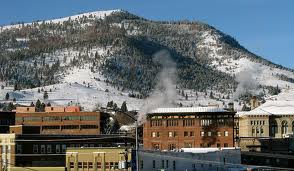Helena Montana is one of the cities that is below the foothills of the Montana Rocky Mountains, it is the county seat of Lewis & Clark County and the capital of the state. It is located in the western part of Montana, with a population in the 2010 census of 28,180 residents and the Helena Regional Airport. The city was founded when gold was discovered on July 14, 1864 in a dry gulch off the Prickly Pear valley, because the city’s main street lies close to the original gulch, it was named Last Chance Gulch. In naming the city of Helena, the first suggestions were Tomah, which was connected to the local Indian people, Pumpkinville, Squashtown, both which were due to the fact the town meeting to name the city was held the day prior to Halloween and there were suggestions of naming it after other existing towns, like Rochester and Winona. The suggestion that resulted in the name, was proposed by John Summerville, who suggested Helena, in honor of Helena Township, Scott County Minnesota. The pronunciation became an item for debate, with former Confederates who insisted it be pronounced in the manner of Helena Arkansas.
Approximately 1888 there were about 50 millionaires living in Helena, which is more per capita than any other city worldwide. This was because of the gold that continued to be mined over a 20 year period, with The Last Chance Placer being one of the most famous deposits in the western United States. Today most of the placer deposits lay underneath of the streets and buildings of Helena. What do exist are the Victorian architecture neighborhoods that sprung up during the gold mining years. There has been gold found, within recent years, with one incident occurring when there were repairs done to a bake and a vein of gold was found under the banks foundation.
The city of Helena became the state capital, after much debate, but was the most populated city at the time. Employment opportunities in the city are numerous, with a large percentage of residents working for the government, since it is the state capital of Montana. This is also a city that has a diverse population, with people that immigrate to Helena for work or to visit, from Canada and other countries.
Downtown Helena has a pedestrian walking mall, which is in an outdoor setting, and has a variety of shops, restaurants, and coffee shops. There is the Capital Hill Mall, and other shopping districts, there is a local symphony, rodeos held, theater, museums and other entertainment for residents and visitors of the capital city. There are many opportunities for outdoor recreation, with the Great Divide Ski Area, cross country skiing at MacDonald Pass and Stemple Pass. There are biking trails around the city, boating in Canyon Ferry Lake, camping at the Helena National Forest, Hiking and backpacking at Mount Helena City Park and fly fishing or hunting. There is no shortage of activities for the residents or visitors of Helena.




